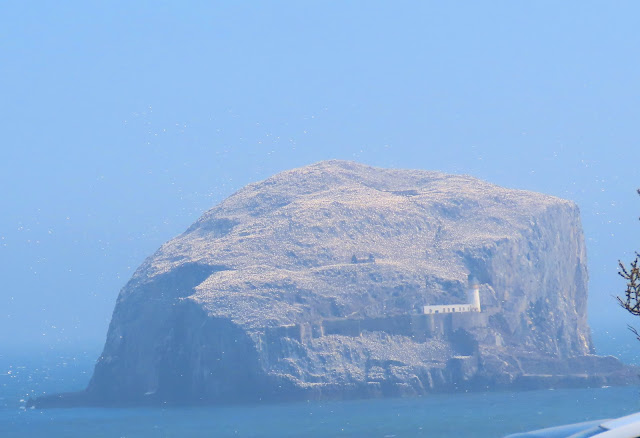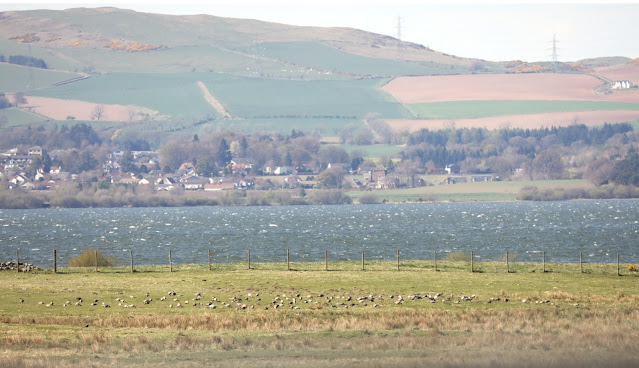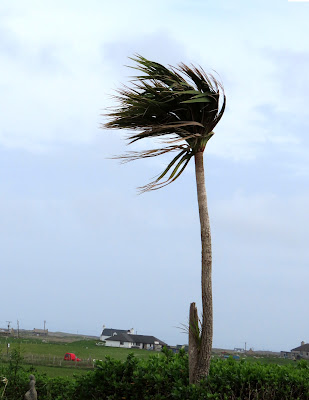Over the Border
Friday April 23
Leaving the Travelodge on a sunny crisp morning, the air redolent with the nasal effluvia of remnant Macdonalds, diesel fumes, all honeyed by the sweet fluting of a Song Thrush.
A very few miles up the road, we crossed the Scottish Border, Saltires proudly fluttering in the morning breeze.
Cove, a tiny cliff top village, famous for its cliffs being part of James Hutton's geological theory of how the Earth was formed.
James Hutton FRSE was a Scottish geologist, agriculturalist, chemical manufacturer, naturalist and physician Often referred to as the father of modern geology, he played a key role in establishing geology as a modern science.
Hutton advanced the idea that the physical world's remote history can be inferred from evidence in present-day rocks. Through his study of features in the landscape and coastlines of his native Scottish lowlands, such as Salisbury Crags or Siccar Point, he developed the theory that geological features could not be static but underwent continuing transformation over indefinitely long periods of time. From this he argued, contrary to conventional religious tenets of his day, that the Earth could not be young.The cliffs here are not impressive for their height, but hold many pairs of nesting Fulmar. On to Skateraw, a migrant hotspot of a small bay and wood, overlooked by the grey cement monstrosity which is Torness Nuclear Power Station. Not much about today. The small group of Oystercatchers on the beach were soon scattered by a dog walker. Groups of the ubiquitous Eider studded the water, Gannets flew by offshore. A few Pied Wagtails hunted for crumbs around the picnic tables, Linnets, Blue Tit and all the Corvids -save the big one - put in an appearance. The usual Snowy Owls could not be seen in the entrance aviaries, hiding or extant? We did see Tree Sparrows nesting on the ivy covered wall.
Bass Rock is an annual pilgrimage. There is now a small, rough, car park from which to view. We parked next to a topless, milk chocolate coloured, vintage Austin. Two men in flat caps and using lap blankets completed the picture. I photographed the rock from the car.
The blizzard of Gannets flying all around the rock does not show up in the photo, the estimated 150,000 pairs of breeding birds makes this the largest Northern Gannet colony in the world.
Longniddry Reeks on the Firth of Forth is a very different place from that we first knew. The large open area of rough entry lanes which allowed free parking in advantageous spots, is now metalled tracks, has a fish and chip shop, mounded walls around all the sea viewing edges - and a car park ticket machine. We spent some time here, Mostly scoping the sea where we saw more Eider, a few Red-breasted Mergansers, a Scoter, two Swallows hustled through and half a dozen Magpies strutted their stuff.
Pam called 'raptor'. A plain dark bird, twiddling its tail, shapely wigs sailed through, hassled by a Carrion Crow. A juvenile Black Kite.
We spent some time here studying and trying out the SatNav instructions. To no avail. What they said should happen didn't. Eureka. Forget it. I used my IPhone very successfully, to negotiate the perilous and convoluted route which is needed to circumvent Edinburgh. We used the wonderful Queensferry Bridge. It sits like a three masted Schooner astride the Firth of Forth, its sail free rigging anchoring it in place. I love it.
Loch Leven RSPB reserve car park is a good place to pick up some trip padders for the list. Robin, Wren, Dunnock, Chaffinch and Chiffchaff. We also had our first Willow Warbler and Garden Warbler of the Year.
Looking over some of the loch pools added Tufted Duck, Coot, Gadwall, Wigeon, Mallard, Teal, and Shoveller. Across to the distant shore a remnant flock of Pink-footed Geese grazed avidly on the fresh grass.
Kinross Travelodge has an M and S outlet. That's supper sorted. Hummus and Carrots for me, Prawn Sandwich for Pam, followed by yoghurt and delicious crisp grapes.








Oo that bridge is gorgeous. Xx
ReplyDelete